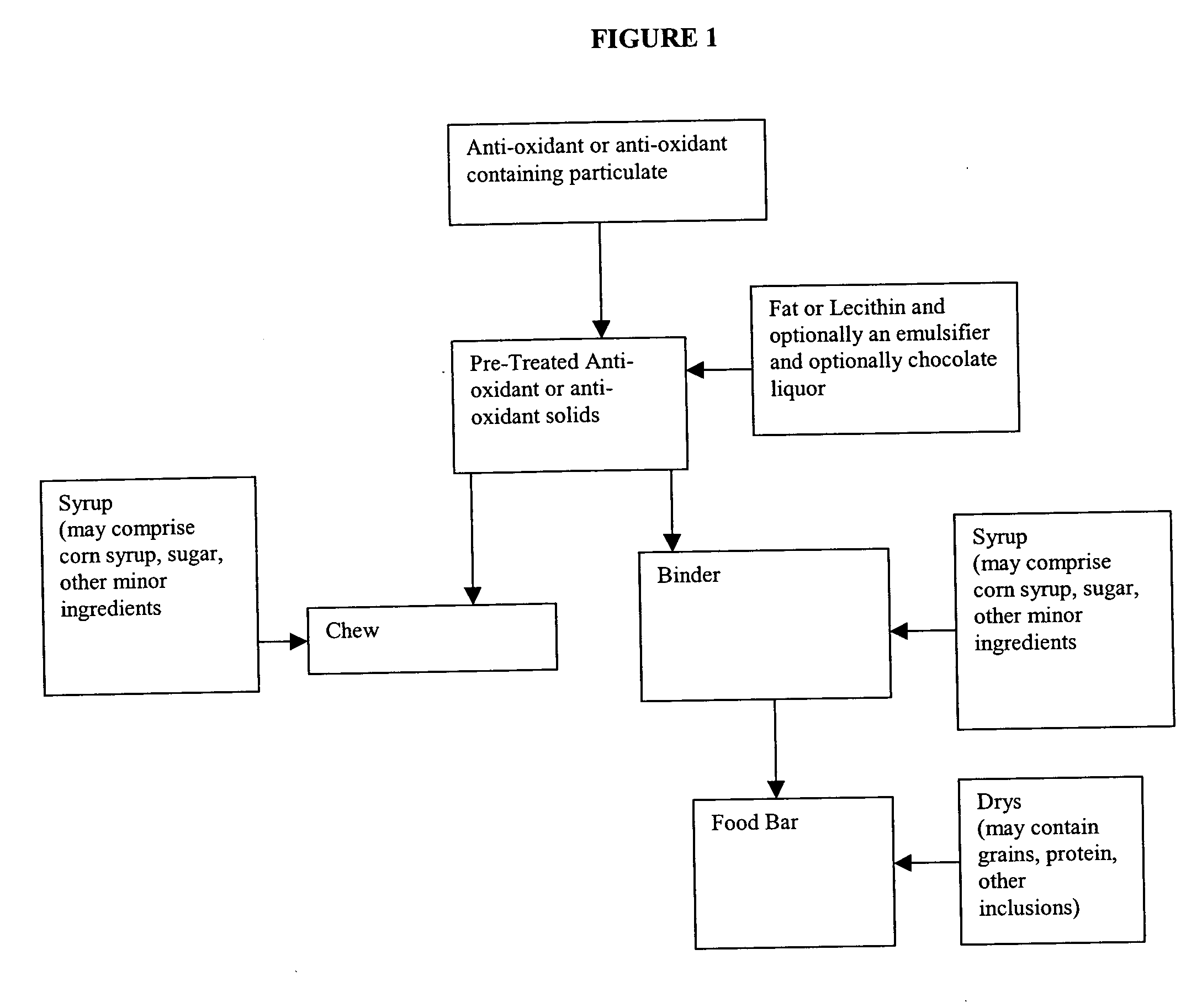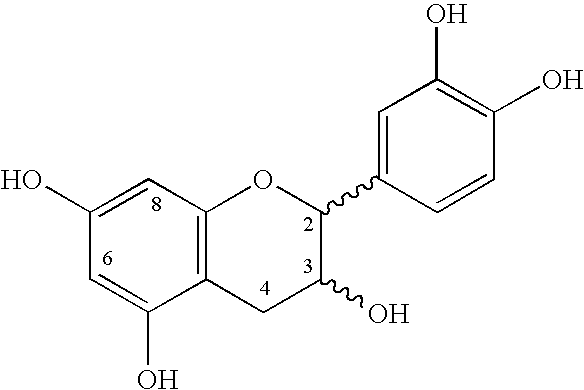Bars and confectioneries containing cocoa solids having a high cocoa polyphenol content and sterol/stanol esters and processes for their preparation
- Summary
- Abstract
- Description
- Claims
- Application Information
AI Technical Summary
Benefits of technology
Problems solved by technology
Method used
Image
Examples
example 1
Method for Preparing High CP Cocoa Solids from Cocoa Beans
[0084] Commercially available cocoa beans having an initial moisture content of about 7 to 8% by weight are pre-cleaned in a scalperator. The pre-cleaned bean from the scalperator are further cleaned in an air fluidized bed density separator. The cleaned cocoa beans are then passed through an infra-red heating apparatus at a rate of about 1,701 kilograms per hour. The depth of beans in the vibrating bed of the apparatus is about 2-3 beans deep. The surface temperature of the apparatus is set at about 165° C., thereby producing an internal bean temperature (IBT) of about 135° C. in a time ranging from 1 to 1.5 minutes. This treatment causes the shells to dry rapidly and separate from the cocoa nibs. The broken pieces separated by the vibrating screen prior to the apparatus are re-introduced into the product stream prior to the winnowing step. The resulting beans after micronizing should have a moisture content of about 3.9% b...
example 2
Production of Chocolate Liquor Containing Cocoa Polyphenols
[0087] Fair average quality (FAQ) cocoa beans having an initial moisture content 7.4% by weight and a fermentation factor level of 233 (31% slaty, 29% purple, 22% purple brown and 17% brown) are selected as the starting material. The cocoa beans are then passed through an infra-red heating apparatus. The feed rate of beans through the infra-red heater and the infra-red heater bed angle are varied to control the amount of heat treatment the beans receive. The amount of time the beans spend in the infra-red heater (residence time) is determined by the bed angle and the feed rate. The times that should be used to prepare the sample material are listed in the table below. At the outlet of the micronizer the IBT of the beans is measured. Expected values are also shown in the table.
[0088] A 1 kg sample of infra-red heated beans, collected off the infra-red heater at different IBTs, are cracked into smaller pieces to facilitate t...
example 3
Chews Containing Sterol Esters in Combination with High CP Cocoa Solids
[0089] The chews were prepared from the ingredients shown below by pre-mixing sterol esters, cocoa solids, lecithin, and dark chocolate liquor or milk chocolate liquor, for example in Z-blade mixer, to prepare the pretreated cocoa solids. The pretreated cocoa solids were incorporated into a cooked syrup (heated to 66° C.) containing the remaining ingredients. The moisture content of the syrup was about 9%. The mixture was slowly cooled, rolled, and wrapped. The moisture content of the final mixture was about 8.3-8.7%.
[0090] The cocoa solids used to prepare the chews had a cocoa procyanidin content of about 50 to about 80 milligrams per gram of defatted cocoa solids. The canola sterol esters used to prepare the chews were supplied by Raisio Benecol Ltd., Finland or Raisio Staaco U.S., Inc. They had a melting point of about 30° C. and were heated at about 50-60° C. to ensure complete liquification. The phytostero...
PUM
 Login to View More
Login to View More Abstract
Description
Claims
Application Information
 Login to View More
Login to View More - R&D
- Intellectual Property
- Life Sciences
- Materials
- Tech Scout
- Unparalleled Data Quality
- Higher Quality Content
- 60% Fewer Hallucinations
Browse by: Latest US Patents, China's latest patents, Technical Efficacy Thesaurus, Application Domain, Technology Topic, Popular Technical Reports.
© 2025 PatSnap. All rights reserved.Legal|Privacy policy|Modern Slavery Act Transparency Statement|Sitemap|About US| Contact US: help@patsnap.com


